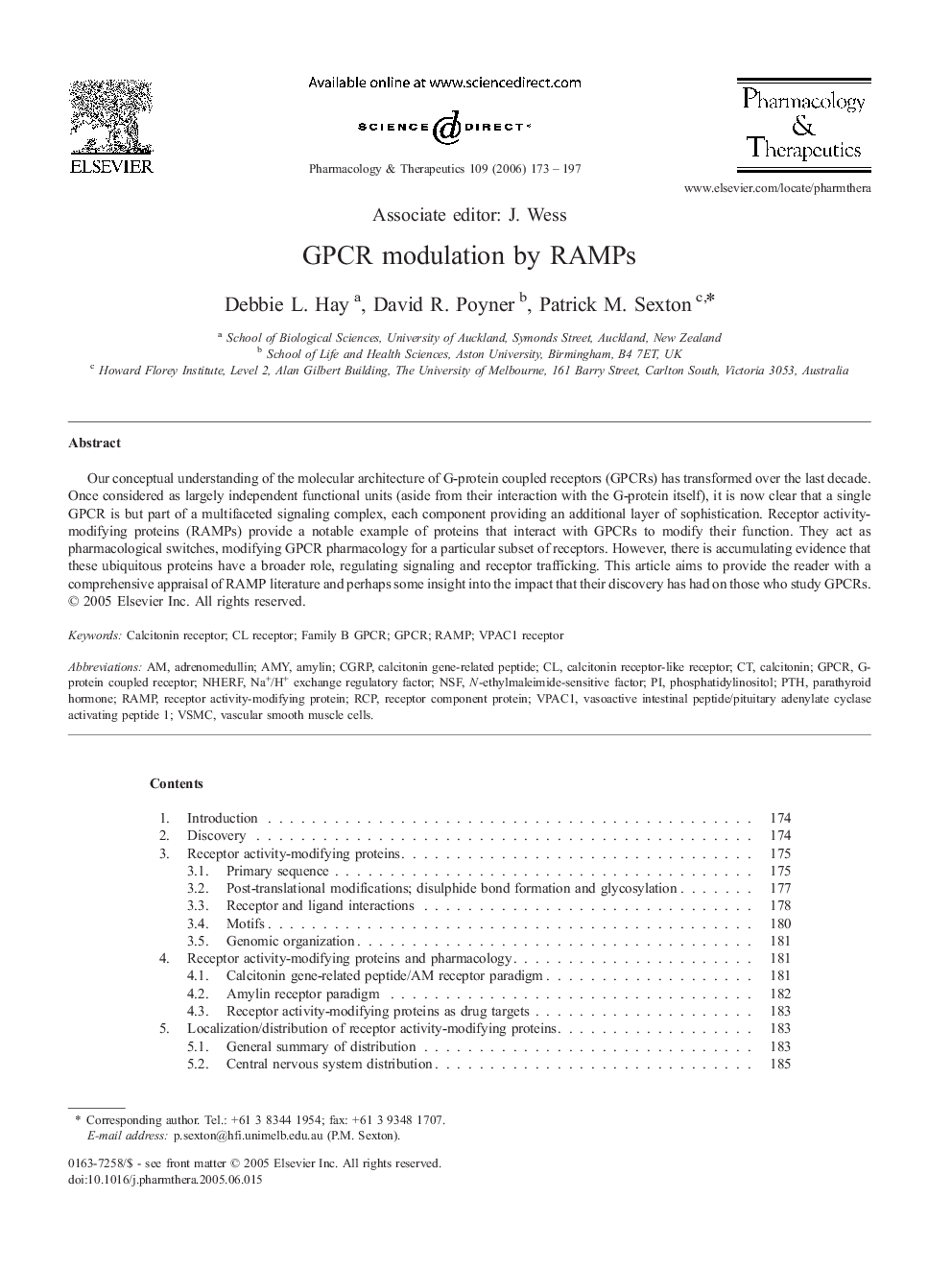| Article ID | Journal | Published Year | Pages | File Type |
|---|---|---|---|---|
| 2564379 | Pharmacology & Therapeutics | 2006 | 25 Pages |
Our conceptual understanding of the molecular architecture of G-protein coupled receptors (GPCRs) has transformed over the last decade. Once considered as largely independent functional units (aside from their interaction with the G-protein itself), it is now clear that a single GPCR is but part of a multifaceted signaling complex, each component providing an additional layer of sophistication. Receptor activity-modifying proteins (RAMPs) provide a notable example of proteins that interact with GPCRs to modify their function. They act as pharmacological switches, modifying GPCR pharmacology for a particular subset of receptors. However, there is accumulating evidence that these ubiquitous proteins have a broader role, regulating signaling and receptor trafficking. This article aims to provide the reader with a comprehensive appraisal of RAMP literature and perhaps some insight into the impact that their discovery has had on those who study GPCRs.
